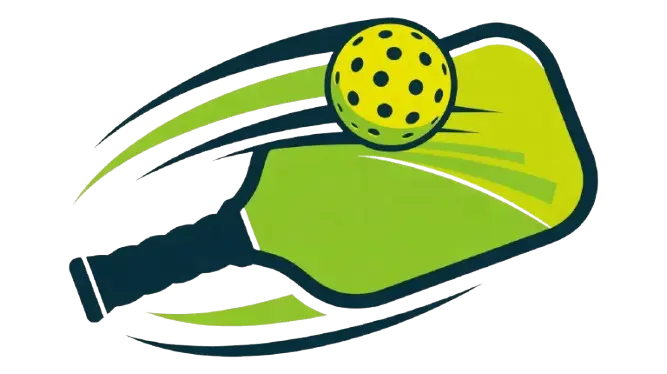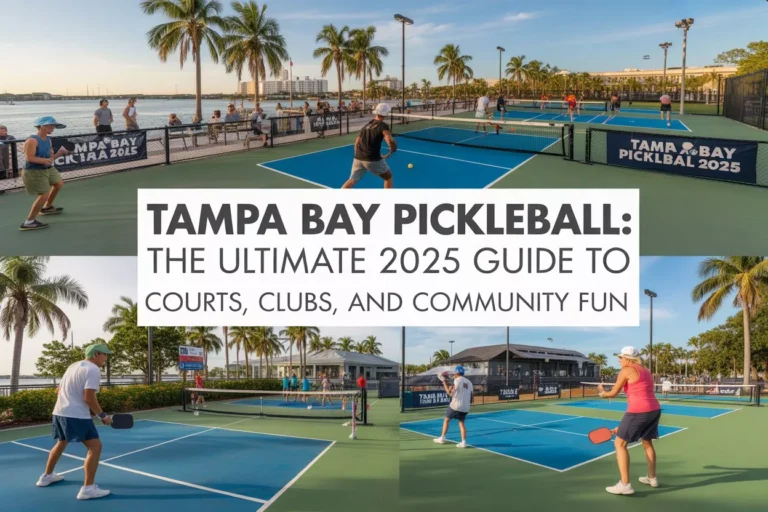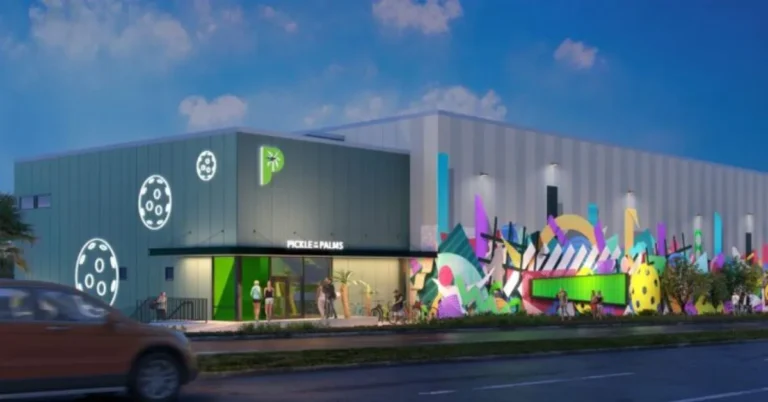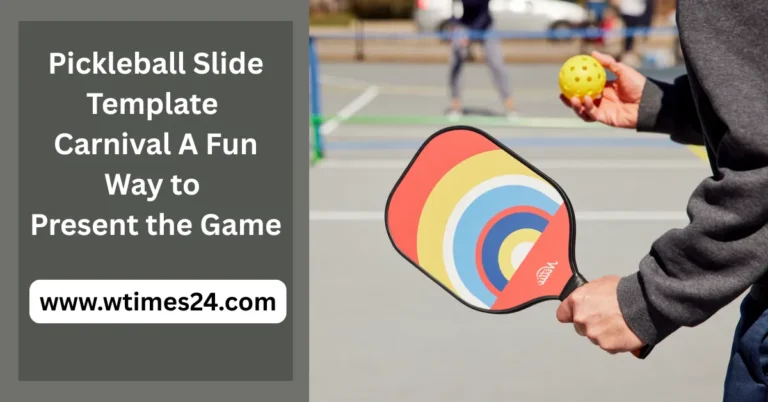Pickleball Most Closely Resembles Which Three Sports? A Deep Dive into Its Athletic DNA
If you’ve ever found yourself on a pickleball court wondering why it feels so familiar, you’re not imagining things. This wildly popular sport is a hybrid, borrowing elements from three well-known games: tennis, badminton, and table tennis. Each sport has left its mark on pickleball’s design, rules, and style of play.
So, when someone asks, “Pickleball most closely resembles which three sports?” the answer isn’t just interesting trivia—it’s the key to understanding the sport’s appeal and learning curve. Let’s break down how each sport contributes to pickleball’s identity, and how that fusion makes it so enjoyable and accessible.
1. Tennis: The Backbone of Court Strategy and Shot Technique
The Similarities
Of the three influences, tennis is perhaps the most apparent. Both sports feature a netted court divided into two sides, and the basic mechanics of play—such as rallies, serves, and volleys—are familiar to tennis players.
- Court Layout: Though a pickleball court is much smaller (20×44 feet), its layout mimics a tennis court, complete with service areas and baselines.
- Rally Play: Both sports center around sustained back-and-forth rallies, requiring accuracy, footwork, and timing.
- Shot Variety: Pickleball includes many of the same strokes—forehands, backhands, lobs, and volleys—all essential to both sports.
- Doubles and Singles: Like tennis, pickleball offers both singles and doubles formats, with slightly different strategies for each.

The Differences
Despite those similarities, the differences between the two sports are what make pickleball more approachable to many new players.
- Serving Technique: Pickleball mandates an underhand serve, which is easier on the shoulder and more consistent for beginners. Tennis, by contrast, uses a powerful overhand serve.
- Ball and Equipment: Instead of a felt tennis ball, pickleball uses a plastic ball with holes—more like a whiffle ball. Players also use solid paddles rather than strung rackets.
- Court Size and Pace: The compact court means less running and faster points, which is part of why it’s so popular among older adults and those with limited mobility.
Why It Matters
For tennis players looking to transition, pickleball feels instantly familiar. But success requires adjusting to the slower, bounce-heavy ball and unique kitchen rules (the non-volley zone near the net). It’s a game of finesse, not just force.
2. Badminton: Agility and Compact Court Movement
The Similarities
Though it may not seem like it at first glance, badminton has had a major influence on pickleball, especially when it comes to movement and positioning.
- Court Dimensions: A pickleball court is roughly the same size as a doubles badminton court.
- Net Play: Both sports reward quick reactions and soft hands when playing near the net.
- Serve Style: The underhand serve common in badminton is also used in pickleball, helping level the playing field for beginners.
- Reflex-Based Footwork: Both games demand rapid movement, direction changes, and split-second decision-making.
The Differences
The core equipment and ball behavior differ significantly.
- Shuttlecock vs. Ball: Badminton’s shuttlecock floats and drops suddenly, making it a game of precise angles and quick reactions. Pickleball’s ball, by contrast, bounces and travels on a more predictable path.
- Lightweight Rackets: Badminton rackets are ultra-light and strung for delicate flicks, while pickleball paddles are solid and offer more control.

Why It Matters
Badminton players often excel in pickleball due to their agility and net instincts. Their fast footwork and ability to control short shots translate perfectly to pickleball’s fast-paced net exchanges.
3. Table Tennis: Paddle Control and Spin Strategy
The Similarities
Table tennis, or ping pong, may not seem like an obvious comparison at first, but its influence on pickleball is undeniable—especially in paddle handling and spin techniques.
- Paddle Use: Both sports use a solid paddle to control a lightweight ball.
- Spin and Placement: Spin plays a big role in both games. In pickleball, slicing or adding topspin can change the outcome of a rally.
- Fast Reactions: Short, rapid-fire volleys at the net mimic the intensity of table tennis rallies.
- Tactical Thinking: Both sports reward smart placement, deception, and timing rather than brute force.
The Differences
- Scale and Movement: Table tennis is played on a table with very little movement required, while pickleball covers a full court and demands more spatial awareness.
- Ball Type: Table tennis balls are smaller and lighter, requiring a different type of touch and finesse than the heavier, bounce-ready pickleball.
Why It Matters
Players with a background in ping pong often thrive in the “kitchen” zone of the pickleball court. Their skill in reading spin and controlling placement gives them a serious edge in close-quarter exchanges.

Comparison Chart: Side-by-Side View
| Feature | Tennis | Badminton | Table Tennis | Pickleball |
|---|---|---|---|---|
| Court Size | Large | Small | Table-sized | 20×44 feet |
| Equipment | Strung racket, ball | Strung racket, shuttlecock | Solid paddle, ping pong ball | Solid paddle, plastic ball |
| Serve Style | Overhand | Underhand | Toss & hit | Underhand |
| Game Speed | Moderate to Fast | Very Fast | Extremely Fast | Moderate to Fast |
| Strategy Focus | Power & Placement | Agility & Reflexes | Spin & Precision | Control & Net Play |
Why Pickleball Just Works
Pickleball isn’t popular by accident. It takes the most engaging aspects of three classic sports and combines them into a single game that’s accessible, strategic, and endlessly fun.
- From tennis, it takes structured rallies and court strategy.
- From badminton, it inherits foot speed and compact movement.
- From table tennis, it gains paddle skill and quick-reaction tactics.
That mix means players from all three sports can find success—and joy—on a pickleball court. And for complete beginners, the rules are easy enough to grasp quickly.
Who’s Playing—and Why It’s Exploding in Popularity
With over 5 million players in the U.S. alone, pickleball is the fastest-growing sport in America. What started as a backyard game is now a staple in schools, senior centers, gyms, and pro circuits.
Watch Video: Best Pickleball Court Tiles: All-Weather, True Bounce & Joint Protection | HiPer Tiles
Who benefits the most?
- Tennis players seeking a lower-impact sport
- Badminton players looking for something new
- Ping pong fans eager to play full-court
- Beginners drawn by the short learning curve
- Older adults and injured athletes who want a safer way to stay active
Final Thoughts
So, pickleball most closely resembles tennis, badminton, and table tennis—but it’s not a clone of any of them. It’s a carefully crafted hybrid that captures the spirit of each, blending their best qualities into something entirely its own.
Whether you’re stepping onto the court for the first time or returning after years in another sport, understanding pickleball’s roots can help you appreciate its depth—and maybe even improve your game. Try it out, and you might just discover your new favorite pastime.
Do you know: Pickleball Slide Template Carnival A Fun Way to Present the Game
FAQs:
What three sports is pickleball most similar to?
Pickleball draws from tennis, badminton, and table tennis—blending court play, agility, and paddle skills into one sport.
Is pickleball easier than tennis?
Yes. The smaller court, underhand serve, and slower ball make it more accessible, especially for beginners and older players.
Can ping pong skills help in pickleball?
Absolutely. Paddle control, spin handling, and quick reflexes from table tennis translate well to pickleball, especially at the net.
How is pickleball different from badminton?
While court size and agility requirements are similar, pickleball uses a plastic ball and solid paddle, offering a very different rhythm and feel.
Why is pickleball growing so fast?
It’s fun, easy to learn, low-impact, and social—qualities that appeal to people across all age groups and fitness levels.







